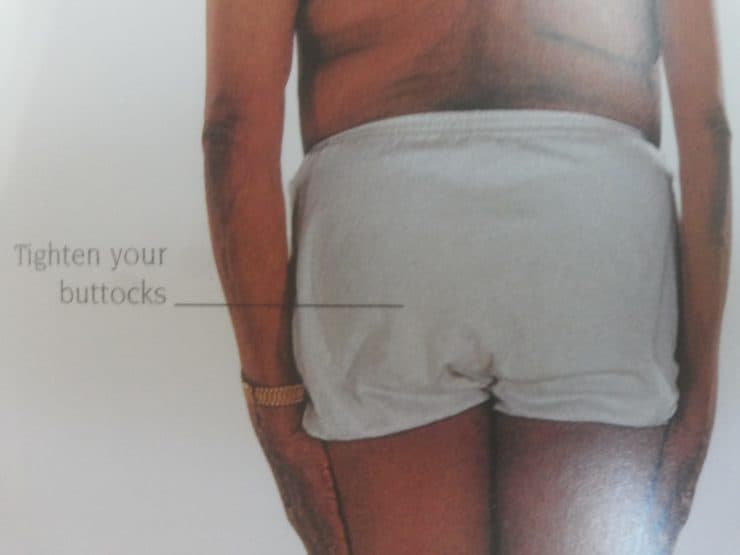
It must have been the fourth month now, that I witnessed someone dearest to me suffered from constant excruciating pain in the lower abdomen region. Throughout the months of hell-like pain day and night, noticeably, she began to develop extreme tightness in the buttock, hip and abdominal region due to the body’s natural protective mechanism against the pain. To her, such reflex is unavoidable and she would give everything in the world just to turn things back to where it was.
Yesterday, a new student walked in to my class. She is also a yoga teacher who has been engaging in conventional Yoga practice for many years. I saw something familiar in her. She too adopts the same habit of tightening the buttocks and drawing the belly inwards. I asked her “are you in pain” and she said “no” and throughout the class, she could not allow herself to let go of the “tightened buttock” and “belly drawn-in” alignment habits. Something like this all the time.

There is a very entrenched habit in long term Asana practitioners to tighten their buttocks all the times throughout all the poses and constantly in reminder to remain as such throughout their daily activities.
I did some researches on this. Before I was introduced to Critical Alignment Therapy/Yoga, I was guilty of teaching “tuck tailbone” or “tighten your buttocks” alignment style too.
It seems to begin this way. All mammals on Earth have something we call withdrawal response. It is also referred to the fight or flight response to help us to escape in face of danger. Human responses are extremely quick and it reflexes in the body first.

It happens before we can consciously think about it. It is something like “withdraw now, think about it later” shown in our body reflexes in confrontation of dangers. Human response to dangers often starts in the face and moves downwards to the neck and then arm and trunks to legs and toe.
This is because impulse originates in the lower level brain stem and arrived at the muscles of the head region earliest travelling down the nerve pathway to the lowest part of the body. Tightening the buttocks is one of the reflex of fear and stress.

For example, if a woman walks down a street hears a sudden emergency explosion, this is what will happen. Within a few millisecond her buttock tighten, belly sucked in, and all other areas affected include shoulders and neck muscles (trapezius) which receive an impulse to contract.
The odd thing is, Yoga practitioners are trained to adopt the withdrawal response too. For Yoga practitioners, most are taught to adopt the same pattern of withdrawal response without the need to be put into a fight or flight situation. All over the world, Yogis constantly remind themselves to maintain it and consequently feel guilty if they do release it.
Naturally, on an aligned pelvis, pubic bone is positioned to support the pelvic organ. But with a tucked pelvis, the Kegel muscles is obliged to assume its roll.

I find it hard to teach long term Yoga students to let go of the grip.

It is weird that everybody is holding the grip tightly without knowing why. Perhaps, it gives security in term of following direction from tradition or gurus. Gurus do not like questions, the “just do what I say” Yoga practice.
Such is the way Yoga practitioners bring hazards to their practices. The muscles of the pelvic floor become chronically contracted when they tighten the buttocks and suck in the belly. Floor of the pelvic needs to be opened and relaxed. Tucking the tail is what human does when he/she is afraid, fearful or stressful and that is when the floor of the pelvis tightened and narrowed by reflex. And next is the breathing restrictions and more tension in the lower back muscles.
I see no reason why we should practice Yoga like someone who is suffering from stage 4 rectal cancer. Thus, from today, free your pelvis, let your breath becomes open and of course this is only possible when your rib cage is aligned too. So that will be the direction of my next writing.
No Comments